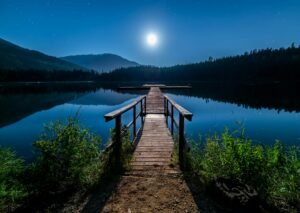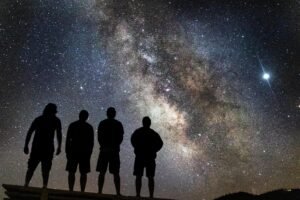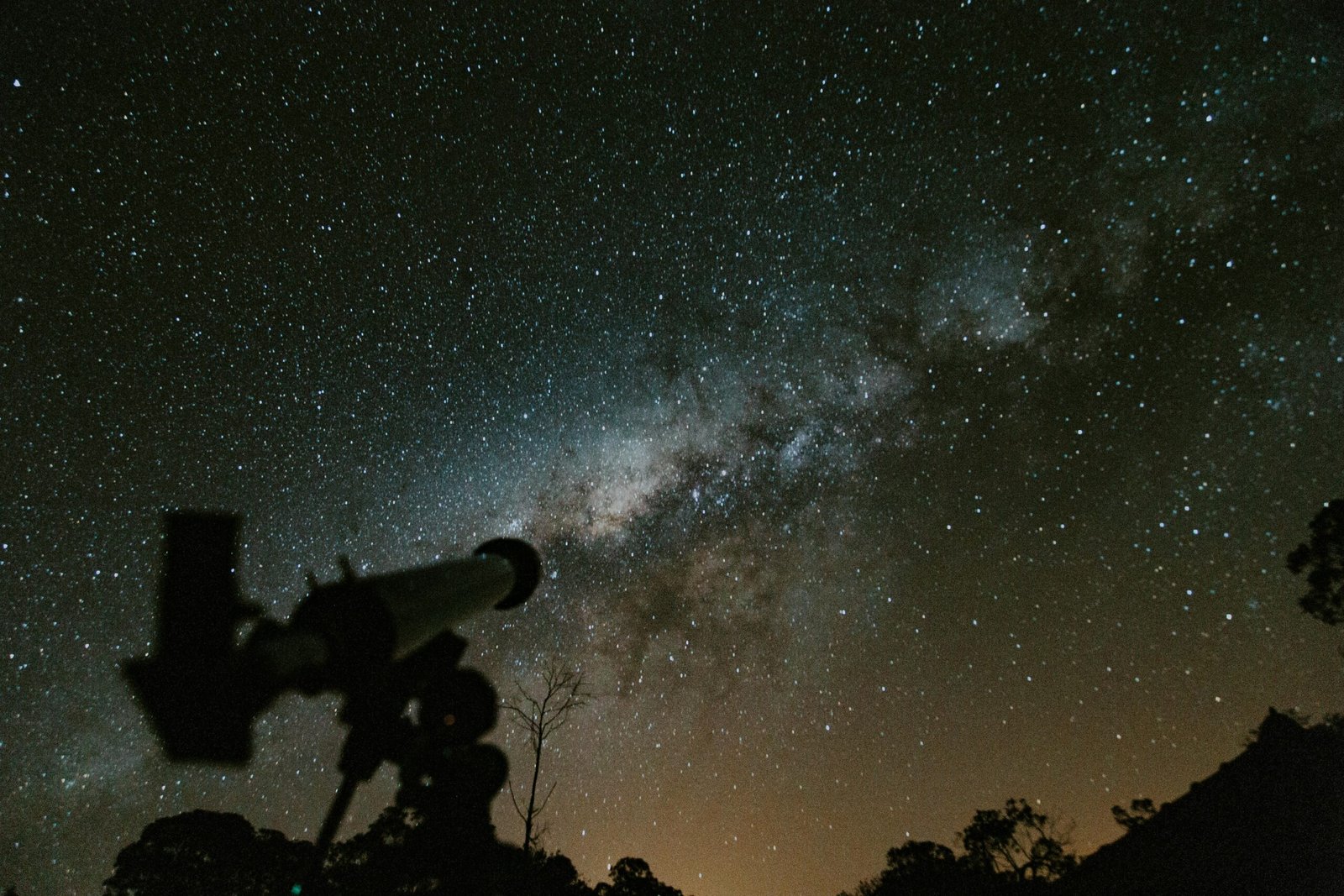Astro Tourism: unveiling the wonders of the universe in luxury destinations
Astro tourism, the new must do for luxury travel and stargazing. Astro tourism has been capturing the hearts of adventurers and celestial enthusiasts worldwide in the last decade. This unique form of tourism offers travelers the opportunity to explore the wonders of the universe while indulging in the comforts of luxurious accommodations and immersive cultural experiences. In this comprehensive guide, we will journey through some of the world’s most breathtaking astro tourism destinations, discovering the best stargazing locations, luxury accommodations, and unforgettable astronomical experiences.
The Best Destinations for Astro Tourism
Dubrovnik, Croatia
Dubrovnik, the pearl of the Adriatic, is not only known for its stunning medieval architecture and crystal-clear waters but also for its ideal conditions for stargazing. The Hotel Excelsior, a luxurious five-star property, serves as the perfect base for astro tourists exploring the city. With its prime location, guests can enjoy minimal light pollution and clear skies, making it an excellent spot for observing celestial objects.
The hotel offers guided stargazing tours led by experienced astronomers, allowing guests to delve deeper into the mysteries of the night sky. For those interested in capturing the beauty of the cosmos, the Hotel Excelsior also provides astrophotography workshops, teaching participants the techniques and skills needed to create stunning images of the stars and planets.
Riviera Maya, Mexico
The Riviera Maya, a picturesque stretch of Caribbean coastline in Mexico, is home to the Grand Velas Riviera Maya, a haven for astro tourists seeking a combination of luxury and cultural immersion. This all-inclusive resort offers a range of stargazing facilities and services, including a dedicated astronomy observation deck equipped with high-powered telescopes.
What sets the Riviera Maya apart is its rich Mayan heritage and the ancient civilization’s deep connection to astronomy. The resort offers Mayan-inspired astro tourism experiences, such as guided tours to nearby archaeological sites, where visitors can learn about the Mayans’ advanced understanding of celestial phenomena. The Grand Velas Riviera Maya also hosts special events and workshops during significant astronomical occurrences, such as meteor showers and planetary alignments.
Norway
For those seeking a truly unique astro tourism experience, Norway offers a chance to witness one of nature’s most spectacular displays: the Northern Lights. Up Norway, a luxury travel company, specializes in crafting sustainable and eco-friendly adventures for astro tourists looking to marvel at the Aurora Borealis.
Up Norway provides a range of luxury accommodations, from cozy cabins to glass igloos, all strategically located in prime Northern Lights viewing areas. The company also offers guided tours led by expert astronomers and photographers, ensuring that guests have the best possible chance of witnessing and capturing the ethereal beauty of the Northern Lights.
In addition to the Aurora Borealis, Norway’s astro tourism offerings include the opportunity to experience the midnight sun and polar night phenomena. During the summer months, the sun remains visible above the horizon, creating an endless golden hour perfect for astrophotography enthusiasts.
Rome, Italy
Rome, the Eternal City, might not immediately come to mind when thinking of astro tourism destinations. However, ArcheoRunning, a unique tour company, has found a way to combine the city’s rich history with the wonders of the night sky. Their signature experience involves stargazing amidst ancient Roman landmarks, offering a fascinating juxtaposition of human history and the timeless beauty of the cosmos.
The Sofitel Rome Villa Borghese, a luxurious hotel located in the heart of the city, serves as an ideal base for astro tourists exploring Rome. The hotel’s rooftop terrace provides a stunning vantage point for observing the night sky, with the city’s iconic landmarks serving as a breathtaking backdrop.
Rome’s astro tourism highlights include various celestial events and phenomena visible from the city, such as planetary conjunctions and meteor showers. The ArcheoRunning team also offers astrophotography workshops, guiding participants through the techniques needed to capture stunning images of the night sky above Rome’s historic sites.
Los Cabos, Mexico
Los Cabos, a picturesque region at the southern tip of Mexico’s Baja California Peninsula, boasts a dry, desert climate and minimal light pollution, making it an ideal destination for stargazing. The area’s luxury resorts, such as the Grand Velas Los Cabos, have capitalized on this natural advantage by offering unique astro tourism experiences.
One of the most memorable offerings is the “Dinner Under the Stars” experience at the Grand Velas Los Cabos. This exclusive dining event, curated by renowned Chef Sidney Schutte, pairs gourmet cuisine with the awe-inspiring beauty of the night sky. Guests are treated to a multi-course meal served in a secluded location, with astronomers on hand to guide them through the constellations and celestial wonders visible above.
Other astro tourism activities in Los Cabos include guided stargazing tours, astrophotography workshops, and even beachside yoga sessions held under the stars. The region’s clear skies and minimal light pollution make it an excellent choice for those seeking a luxurious and immersive astro tourism experience.
Colorado, USA
Colorado, with its vast expanses of wilderness and protected public lands, is a prime destination for astro tourism in the United States. Mesa Verde National Park, in particular, stands out for its exceptional dark sky conditions and opportunities for stargazing.
The park, which is also home to ancient Puebloan ruins, offers visitors the chance to observe celestial objects and phenomena in a setting steeped in history and natural beauty. Guided stargazing tours and astronomy programs are available, allowing visitors to learn about the night sky and its cultural significance to the Puebloan people.
For those seeking a unique accommodation experience, HomeExchange Collection offers a range of luxury homes in the Mesa Verde area, providing a comfortable base for exploring the park’s astro tourism offerings. Staying in a private home allows for a more intimate and immersive experience, with the added benefit of having a dark sky sanctuary right outside one’s door.
Planning Your Astro Tourism Trip
When planning an astro tourism trip, there are several factors to consider to ensure the best possible stargazing experience:
- Best times to go: Generally, the best time for stargazing is during the new moon phase, when the sky is at its darkest. However, specific celestial events, such as meteor showers or planetary alignments, may warrant planning a trip around those dates.
- Essential equipment: While many luxury astro tourism destinations provide telescopes and other stargazing equipment, it’s always a good idea to bring a pair of binoculars and a red-light flashlight. These tools will enhance your viewing experience and help preserve your night vision.
- Accommodations: When choosing accommodations for your astro tourism trip, look for properties that offer amenities and services tailored to stargazers, such as telescopes, astronomy guides, or astrophotography workshops.
- Guided tours and workshops: Participating in guided stargazing tours or astronomy workshops can greatly enhance your astro tourism experience, providing insights into the night sky and its wonders that you may not have discovered on your own.
Astrophotography for Astro Tourists
For many astro tourists, capturing the beauty of the night sky through photography is an essential part of the experience. To get started with astrophotography, you’ll need the following basic equipment:
- A DSLR or mirrorless camera with manual settings
- A wide-angle lens with a fast aperture (f/2.8 or wider)
- A sturdy tripod
- A remote shutter release or intervalometer
When photographing the night sky, it’s essential to use manual camera settings, such as a high ISO (1600 or higher), a wide aperture (f/2.8 or wider), and a long exposure time (15-30 seconds). Focus can be achieved by setting your lens to infinity or using the live view function to zoom in on a bright star and adjusting focus until it appears sharp.
Composition is key in astrophotography, so take the time to frame your shots thoughtfully, incorporating interesting foreground elements or using the rule of thirds to create a balanced image. Post-processing can also enhance your astrophotographs, bringing out details in the Milky Way or emphasizing the colors of the stars.
Responsible Astro Tourism
As astro tourism gains popularity, it’s crucial for travelers to be mindful of their impact on the environment and the night sky. Light pollution is a growing concern, as it not only diminishes the visibility of celestial objects but also disrupts the natural rhythms of wildlife and ecosystems.
To minimize their impact, astro tourists should adhere to the following guidelines:
- Use red-light flashlights or headlamps to preserve night vision and minimize light disturbance.
- Avoid using bright white lights or flash photography when observing wildlife or in sensitive natural areas.
- Support accommodations and tour operators that prioritize dark sky preservation and sustainable practices.
- Educate others about the importance of dark sky conservation and the negative effects of light pollution.
By being responsible astro tourists, we can help ensure that the wonders of the night sky remain visible and accessible for generations to come.
Additional Resources for Astro Tourists
For those looking to deepen their knowledge and engagement with astro tourism, there are numerous resources available:
- Astronomy clubs and organizations, such as the International Dark-Sky Association, offer a wealth of information and opportunities for involvement in dark sky preservation efforts.
- Online forums and communities, such as Cloudy Nights or Stargazers Lounge, provide a platform for astro tourists to connect, share experiences, and learn from one another.
- Guidebooks and apps, like “The Backyard Astronomer’s Guide” or the “Sky Guide” app, can help astro tourists navigate the night sky and plan their stargazing adventures.
- Astrophotography tutorials and workshops, both online and in-person, can help aspiring astrophotographers hone their skills and techniques.
Conclusion
Astro tourism offers a unique and transformative way to experience the wonders of the universe, combining the thrill of travel with the awe-inspiring beauty of the night sky. By exploring the world’s best stargazing destinations, indulging in luxurious accommodations, and engaging in immersive cultural experiences, astro tourists can forge a deeper connection with the cosmos and the natural world.
As the popularity of astro tourism continues to grow, it is increasingly important for travelers to prioritize responsible and sustainable practices, helping to preserve the darkness of the night sky for future generations. By supporting eco-friendly accommodations, participating in dark sky conservation efforts, and educating others about the importance of reducing light pollution, astro tourists can play a vital role in protecting the world’s celestial heritage.
So, whether you’re a seasoned stargazer or a curious adventurer, astro tourism invites you to embark on a celestial journey, discovering the wonders of the universe in some of the world’s most breathtaking destinations. With its combination of luxury, cultural immersion, and natural beauty, astro tourism promises an unforgettable experience that will leave you with a renewed sense of wonder and a deeper appreciation for the mysteries of the cosmos.
| Destination | Luxury Accommodation | Key Experiences |
| Dubrovnik, Croatia | Hotel Excelsior | Guided stargazing tours, astrophotography workshops |
| Riviera Maya, Mexico | Grand Velas Riviera Maya | Mayan-inspired astro tourism, astronomy observation deck |
| Norway | Up Norway | Northern Lights viewing, midnight sun, sustainable adventures |
| Rome, Italy | Sofitel Rome Villa Borghese | ArcheoRunning stargazing tours, astrophotography workshops |
| Los Cabos, Mexico | Grand Velas Los Cabos | “Dinner Under the Stars,” guided stargazing tours |
| Colorado, USA | HomeExchange Collection | Mesa Verde National Park stargazing, dark sky conditions |
In conclusion, astro tourism is a rapidly growing trend that combines the best of luxury travel, cultural immersion, and the timeless beauty of the night sky. By exploring the world’s top stargazing destinations and engaging in responsible tourism practices, astro tourists can connect with the universe in a profound and meaningful way, all while indulging in the comforts and amenities of world-class accommodations. Whether you’re marveling at the Northern Lights in Norway, dining under the stars in Los Cabos, or photographing the Milky Way above ancient ruins in Rome, astro tourism offers an unparalleled opportunity to discover the wonders of the cosmos and forge unforgettable memories that will last a lifetime.




